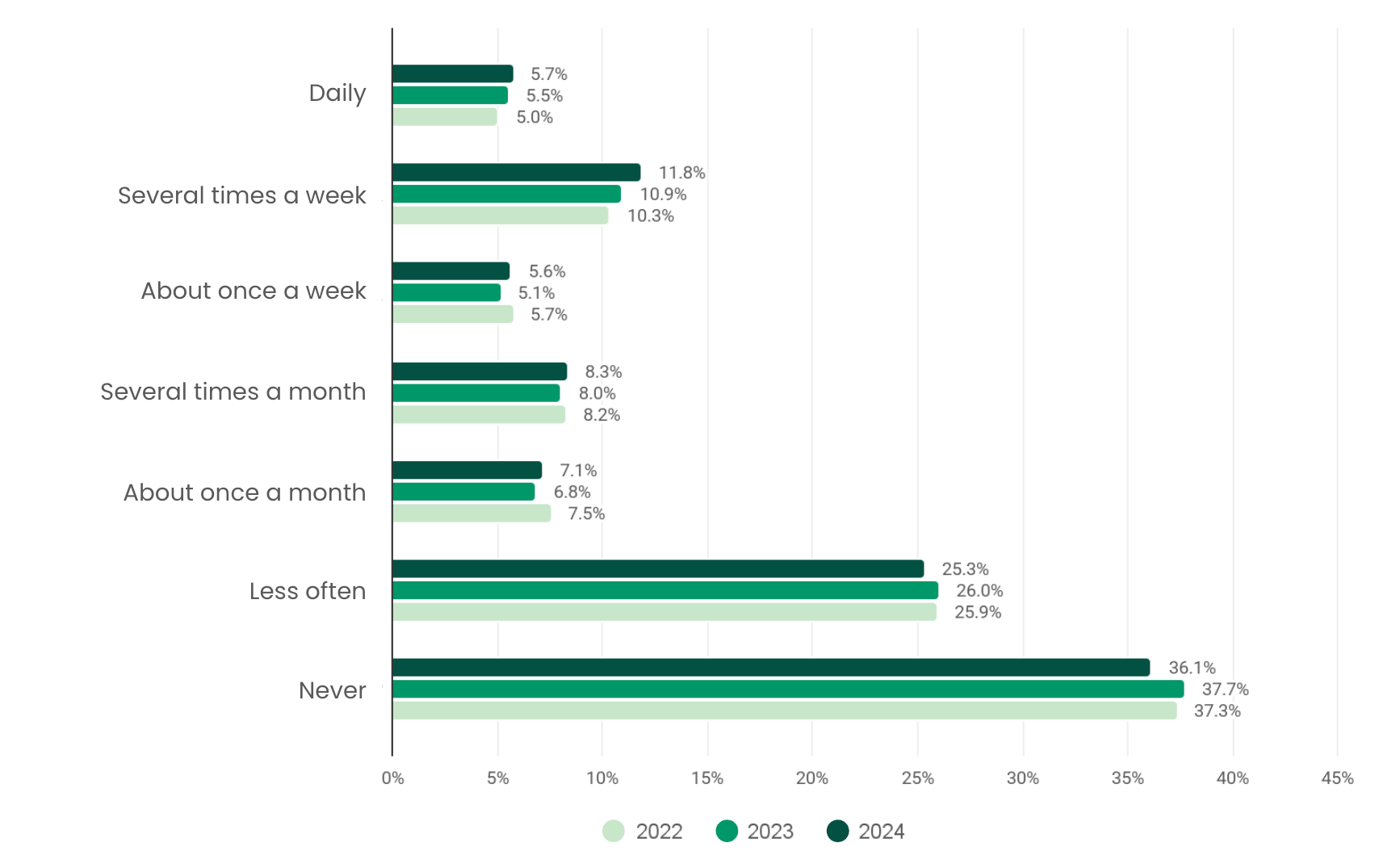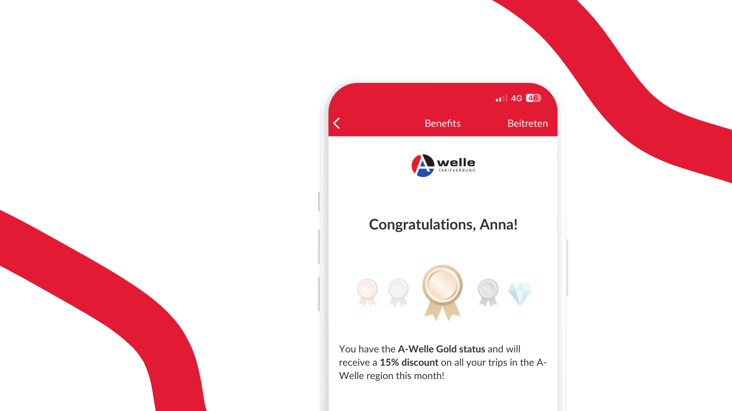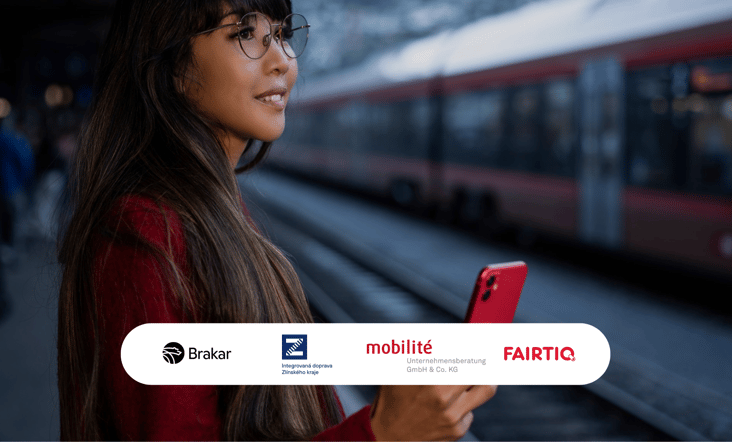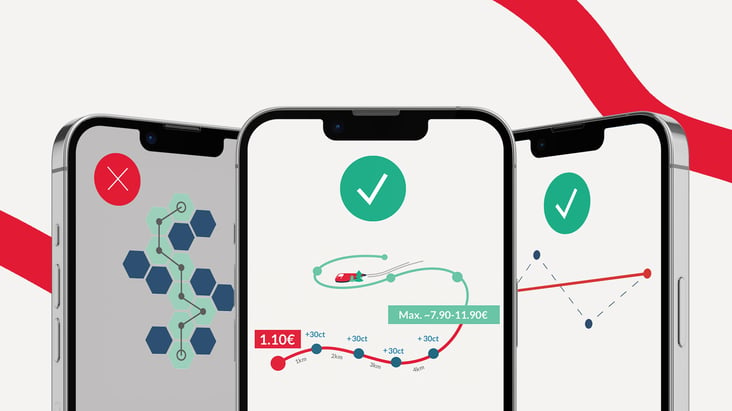
When the Price of Passes Becomes a Barrier
This January’s price increase of the German nationwide pass—the “Deutschlandticket”—has reignited an important question in the country: Is a season ticket still appealing for all public transport users—whether present or future? This debate isn’t limited to users. Transport operators are also grappling with fluctuating demand and shrinking revenue streams if passengers were to abandon public transport altogether without the Deutschlandticket.
However, there is more room for manoeuvre than it might seem at first glance. While the Deutschlandticket as a nationwide offering, is relatively inflexible, regional tariff models hold significant potential to address local needs—and by so doing, attract new customer segments.
Flexibility Over Commitment: Lessons from North Rhine-Westphalia
North Rhine-Westphalia (NRW) in Germany demonstrates how things can be done differently. The eezy.nrw model follows a rigorously user-centric approach: anyone travelling with the FAIRTIQ app or other digital pay-as-you-go (DPAYG) solutions pays a maximum of €34.50 per day and never more than €58 per month. This price cap aligns with the Deutschlandticket—but crucially, without requiring a season ticket or advance commitment.
The key advantage: the price cap is applied automatically, and journeys are displayed transparently within the app. For passengers, this means no tariff jungle, no mental calculations—just full cost transparency. A system that adapts to real mobility behaviour, rather than the other way around.
Unlike the Deutschlandticket, however, the capping in NRW is not applied nationally but is specific to the region. This regional focus allows for more flexible, tailored solutions that respond to local mobility patterns.
“The monthly cap in eezy.nrw provides absolute freedom for occasional users thanks to its price certainty and flexibility. Customers no longer need to decide in advance whether a season ticket makes sense for them. Pre-emptive decisions and long-term commitments become unnecessary. An ideal product for occasional users!”
Eduard Rollmann, Head of Competence Centre Marketing NRW, Verkehrsverbund Rhein-Sieg GmbH
Global Approach: Capping in FAIRTIQ Regions
Fare capping is already common practice. Whether it’s daily, weekly or monthly caps—transport operators define the appropriate limit, and FAIRTIQ implements it. The app automatically recognises applicable fare rules, tracks journeys, and ensures that passengers never pay more than necessary.
Other FAIRTIQ regions also show how flexibly capping models can be designed and even combined with discount systems:
| Region | Capping Model | Additional Features |
| North Rhine-Westphalia - Germany |
Automated daily & monthly capping |
|
| Magdeburg (MVB), Flensburg (Aktiv Bus), Erfurt (VMT) - Germany |
Automated daily & weekly capping | |
| Occitanie - France | Monthly cap | Flexible fare models for different passenger groups (Learn more) |
| A-Welle - Switzerland | Monthly cap | "premyo" reward system with automatic discount tiers (Learn more) |
In these countries, as well as Austria, Liechtenstein, and the Czech Republic, daily caps have already become the norm.
Spotlight on Occasional Users: An Untapped Potential in Public Transport
Not everyone uses public transport regularly—yet this group holds enormous potential. Recent data (Statista, 2024) reveals:
- Only 17.5% of the population in Germany regularly uses buses or trams (5.7% daily, 11.8% several times a week)
- 21% use public transport irregularly—about once a week to once a month
- 61.4% use it rarely or never
In contrast, 13.5 million people—or 16% of the German population—hold a Deutschlandticket (as of February 2025)—an impressive figure, but far from tapping into the full potential.
🔎 Frequency of bus and tram usage in local public transport in Germany, 2022–2024 (in per cent)

The group of occasional users—over 20% of the population—represents millions of untapped opportunities. And those who currently rarely or never use public transport are more likely to be won over by simple, flexible, and digital solutions rather than rigid season tickets.
This is a truly brilliant solution — as an occasional rider, it’s exactly what’ll get me using the train more often! Huge thanks to whoever made this happen.
— Feedback from a FAIRTIQ user on the launch of fare capping in NRW
How Capping Opens the Door to Public Transport
For occasional users, a season ticket is often hard to justify—not because they reject public transport—but because their everyday life demands greater flexibility. This is where a system with automatic price caps can make all the difference. Flexible models like capping offer:
- Cost transparency: You only pay for what you actually use.
- Predictability: Price caps provide security—without advance decisions.
- Accessibility: An easy entry point without commitment, but with full control.
Price caps build trust and simplify access to public transport—not just for occasional users. In doing so, they increase the likelihood of more frequent usage.
Learning from Mobility Behaviour—Not Guesswork
Another often-overlooked advantage: traditional season tickets offer little insight into actual usage. When, where and how people travel largely remains a black box. Digital solutions like DPAYG, combined with capping, make mobility patterns visible—of course, anonymised and GDPR-compliant.
Transport operators gain valuable insights, enabling them to develop more targeted tariffs and services, and to plan resources more efficiently. The result: better services, more satisfied passengers, and a public transport system that truly meets people’s needs.
A True Win-Win Situation for Everyone
The old binary of “season ticket or single ticket” no longer reflects how people move. What’s needed now are smart, fair solutions that adapt flexibly while building trust.
Combining automatic capping with digital pay-as-you-go ticketing offers benefits for all parties:
- For passengers: Simple handling, flexible use, fair pricing.
- For transport operators: Lower entry barriers for passengers, satisfied and loyal users, revenue security.
So, is it time to rethink fare models?
The figures speak for themselves—and the technology is already here.







Share